In our Know Your Ship blog with Sentini Marine, we cover a range of topics about keeping yourself and others safe onboard. Topics range from fire fighting to dealing with medical emergencies. In this article, it’s all about how to be effective in a ‘man overboard’ situation!
A fast response is required when the Man Overboard alarm is raised, crew must act instinctively based on their knowledge of procedures and drill training. A calm and structured approach combined with skilled teamwork is vital, requiring each crew member to be confident in their role should the alarm sound. Being familiar with roles and responsibilities, equipment and procedures is essential to being effective in these scenarios.
No one wants to be the weakest link.
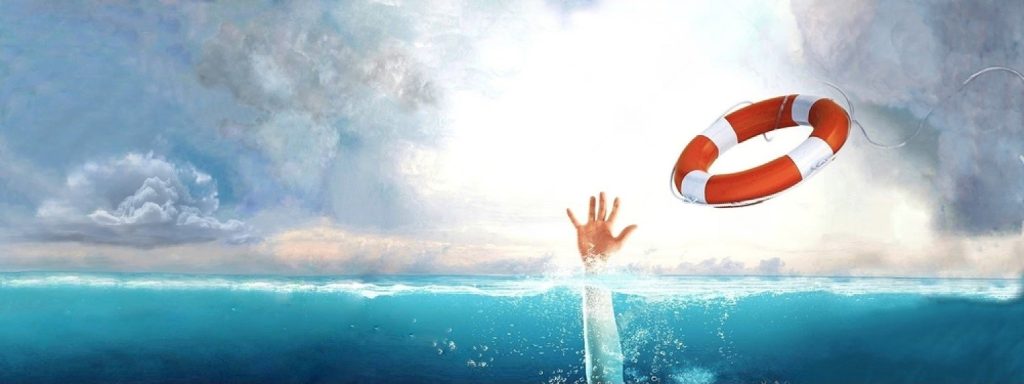
Raising The Alarm
According to SOLAS, If a person is seen falling or jumping over the side:
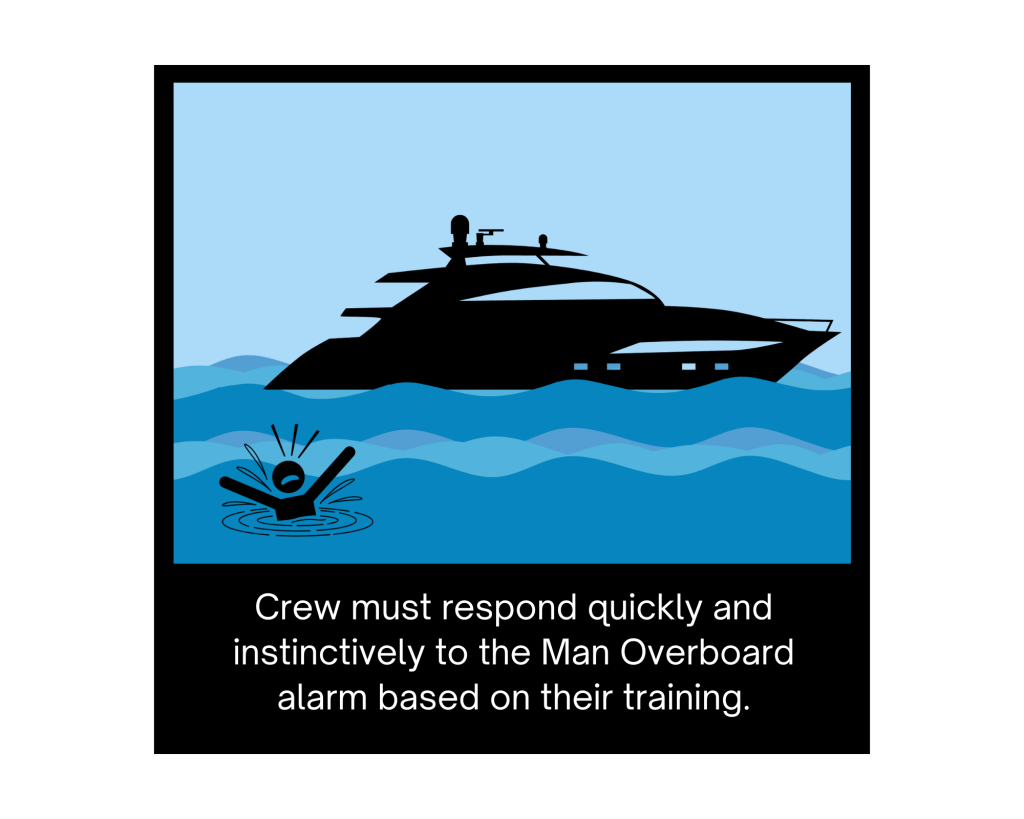
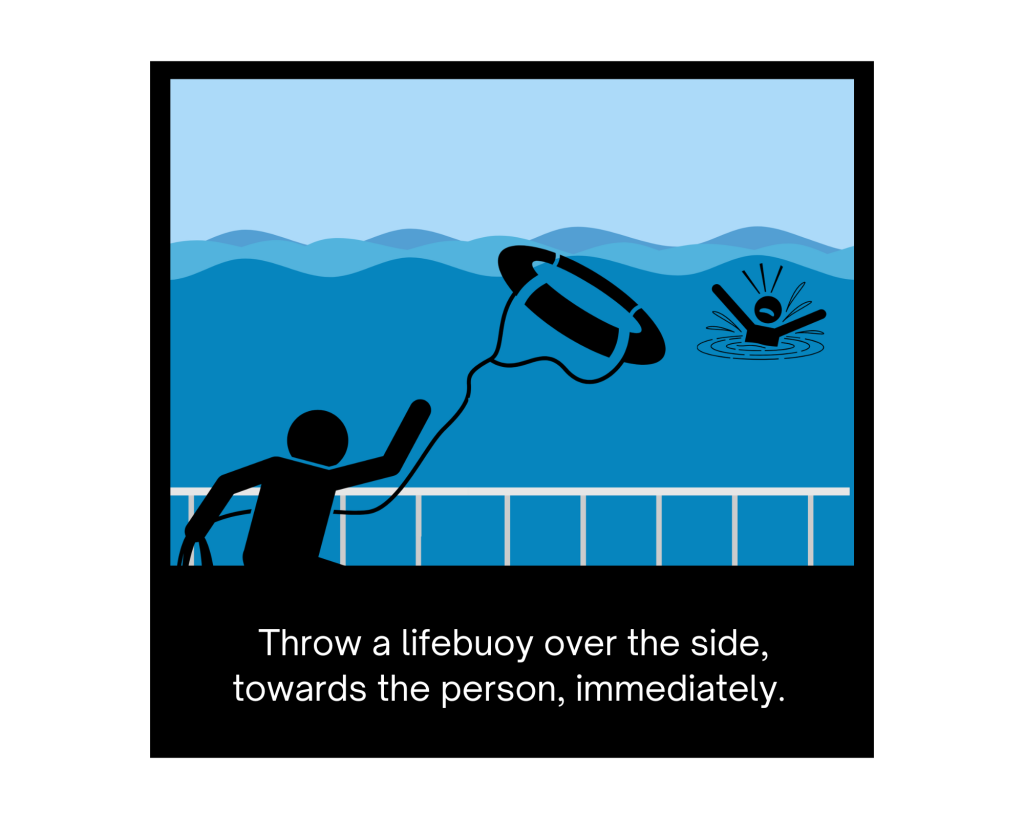
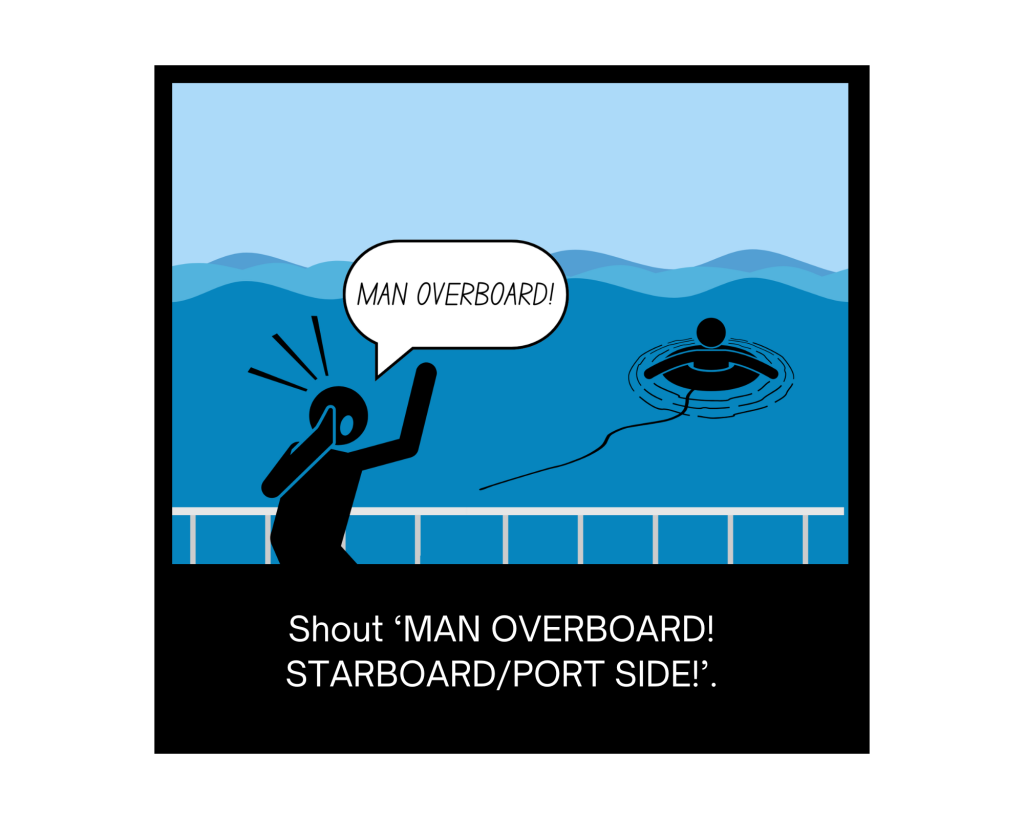
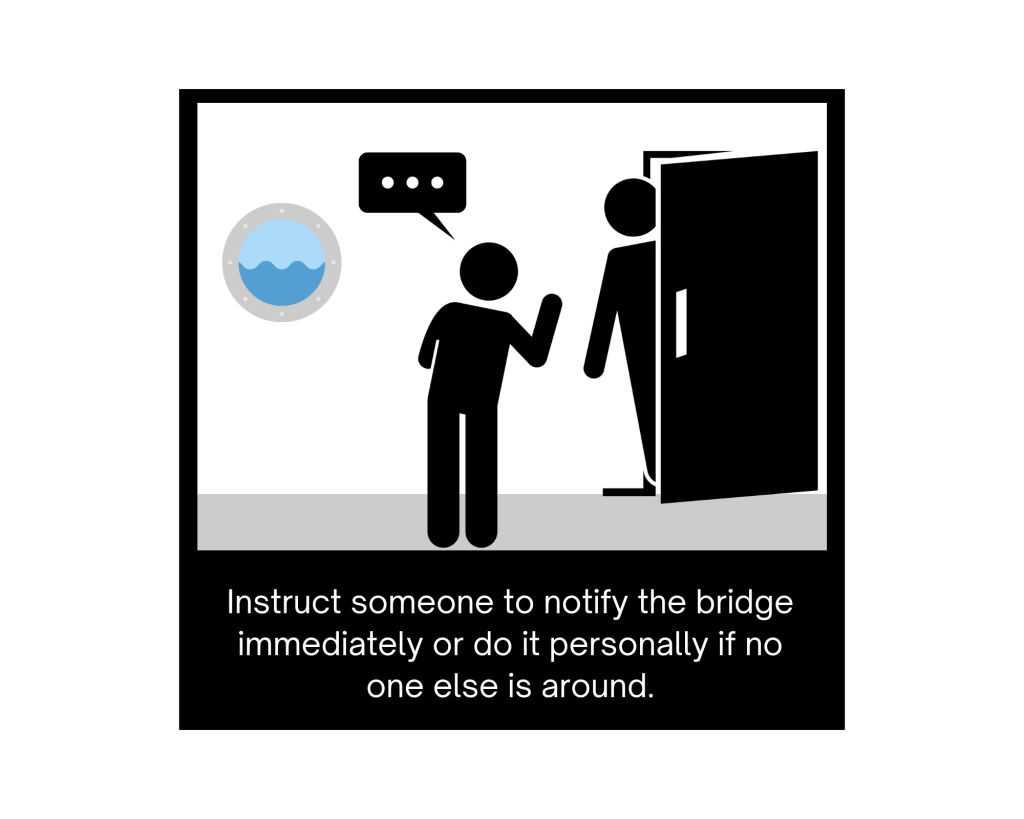
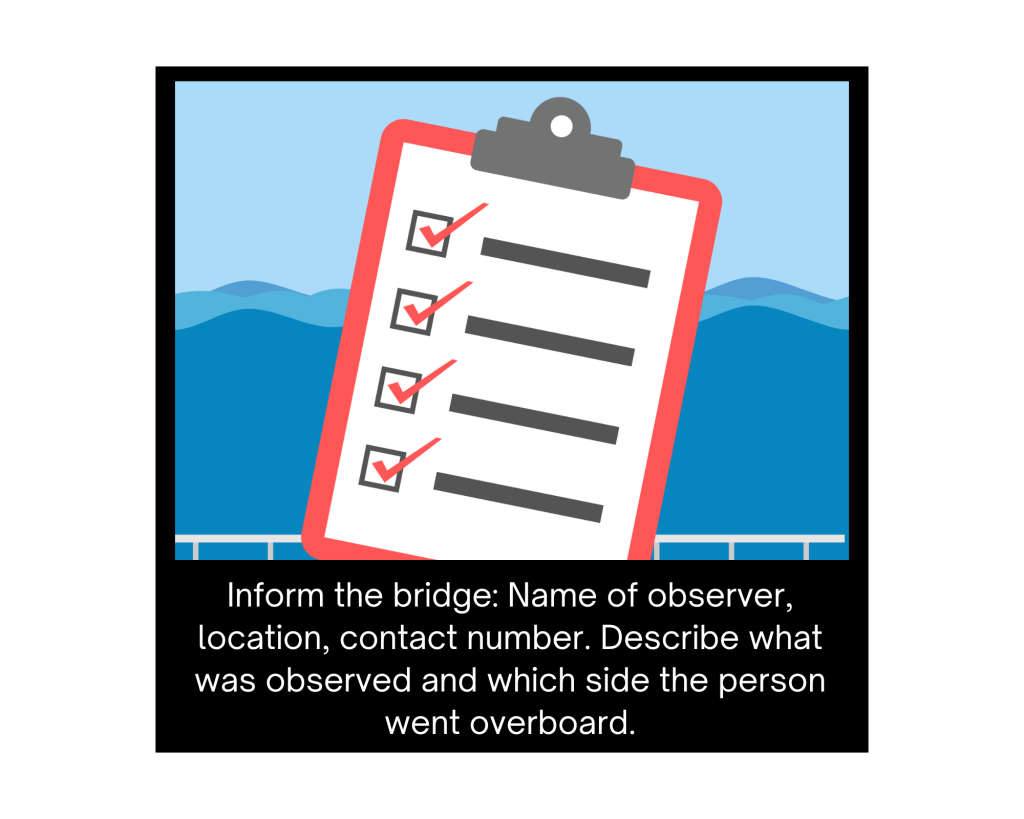
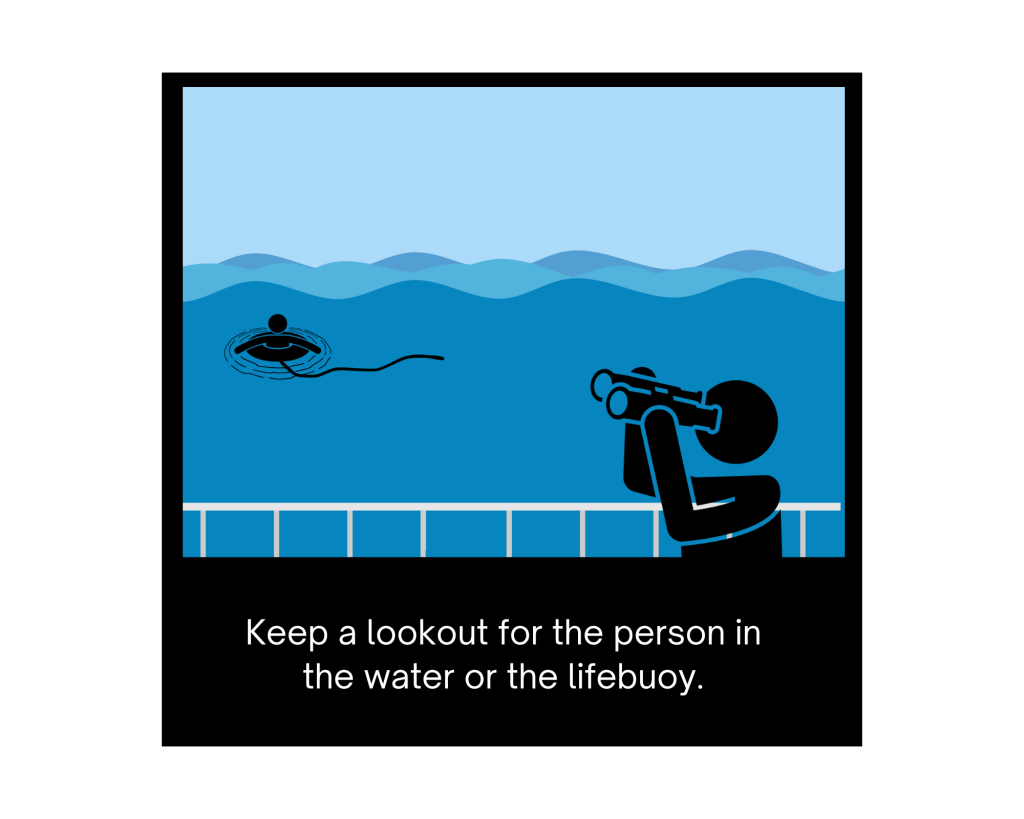
Every ship could have a different method of raising a man overboard alarm in a spoken way, but the universal alarm is three long blasts.
This could be over the PA system but should also be made over the whistle. Not only does it raise the alarm for the crew on board, but it will be heard by the person in the water. This gives them hope and fight to know that the vessel knows they have gone overboard and are going to come back and look for them.
Added Dangers
The role of maintaining visual contact on the person in the water is made even more vital in rough weather, waves create visual barriers to the person in the rescue boat, meaning that even in proximity, they may not be seen at water level.
According to the ‘Ship Captain’s Medical Guide’, the person should be rescued “in horizontal position, if possible, to prevent post-rescue collapse”. This might be a part of the MOB protocol that isn’t practiced during drills, a fender or life jacket isn’t going to need stability support. Pulling a fully clothed, injured person out of the water in rough weather requires skill and preparation, is your crew ready for this? Are you ready for this?
Watching for deterioration in the casualty, especially after near-drowning, is very important. The continued monitoring should include pulse, blood pressure, respiration rate, level of consciousness, appearance, and temperature.
Things To Consider:
- Do you know what your role is should the MOB alarm be raised?
- Could you instinctively grab the nearest piece of equipment needed for response, retrieval and treatment, do you know the location of all life rings, all first aid kits, stretchers, immersion suits, etc.
- Are you confident in assessing and treating a person pulled from the water?
- Do you know the signs to look out for that signal a person has deteriorated in the hours/days after being rescued?
- Practice throwing the life ring at the next MOB drill (familiarising yourself with your equipment and knowing your capabilities, will help to build confidence).
Could you act instinctively in this situation, or are there gaps in your knowledge that make you uneasy about your role? Walking around your vessel, familiarising yourself with the life ring locations and taking an active role in the drills, is a good start. Never be afraid to admit that you don’t know something, your crewmates and superiors will always be happy to help you be ready for all eventualities.
Familiarity with the vessel you work on and its life saving equipment is essential, don’t be passive about it. Your safety, and the safety of your crew mates, is your responsibility.
Sentini Marine supply bespoke Technical Operating Manuals and training to both the commercial shipping world and private yachts.
Find them on their website here: https://www.sentinimarine.com/
To keep up to date with the latest Superyacht Content News, click here.
Sign up to our Newsletter below:


.gif)



.gif)












